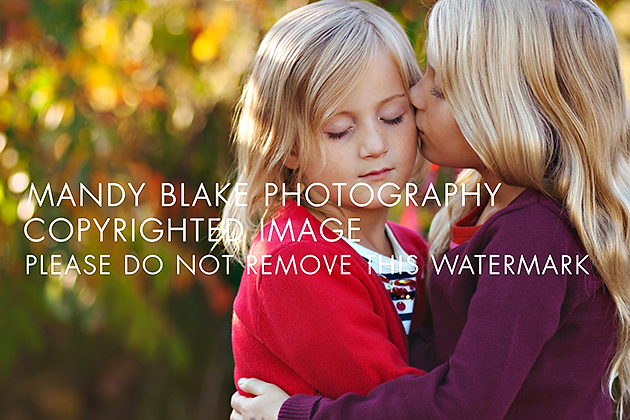
Watermarks were originally signs printed on documents and bills in Italy in 1281. Nowadays, they are widely used online. With the appearance of the first author images, people wanted to protect their authorship and put their names on these visuals. A watermark is a sign on an image that refers to its author or owner. It should be half-transparent and barely noticeable.

A digital photography watermark is an overlaid photo, logo, or text put over a photograph to save it from unauthorized use by third parties. I can’t say the watermark is an effective way of protecting photos online. There are more effective, alternative ways to protect and promote your photos. However, before discovering these alternatives, let’s make everything clear about old-school photography watermarks.

By default, according to generally accepted standards, the watermark should be translucent, and barely visible, like circles on the water. The sign itself should be implacable, as the image itself is important, and not its authorship. A professional watermark is discreet and not too bright, but it is a quite discernible sign of authorship.
Despite the generally accepted rules, a lot of beginning photographers make mistakes, putting too big or too visible watermarks in the image, which diverts the attention from the picture.
I recommend using free logo templates to create a beautiful and professional photography watermark.

It is the first example of an incorrect way of adding a watermark to photos. In the picture, you can see an excessive amount of information about the photographer, so the aesthetics of the image is damaged, and the first thing you notice is the sign but not the photo. While this watermark is designed properly, the colors look bleak. It does not stand out very much against the background, however, the information is excessive.

This is another example of watermarking photos incorrectly. The tone and font are too sharp and eye-catching, and there is a large amount of unnecessary information. Do not write phrases or long sentences; remember that a watermark for photo should contain easy-to-understand information about the creator of the image, which is not conspicuous and does not spoil the aesthetics of the image. Put your logo and that’s it.

The text tone and font are chosen well, as it’s not flashy, but when creating a watermark for photography, do not forget about the basic rule that the watermarks should be placed only in the corners of the photo and have a smaller size.

In many images, you can notice the watermark for photo made in the form of a photographer’s logo. Of course, such watermarking method also has the right to exist. However, there is a violation of some rules in the given example. The colors are rich and bright, which makes them stand out. The sign is placed on the entire width of the image, and this spoils the impression. If you take a look at the photo, you will see that the watermark attracts too much attention because of its size.
If you want to get professionally edited photos but don’t have advanced image editing skills, you can outsource this task to our color correction service. Our photo retouchers will quickly enhance your images and send you them back within the set deadline. They will adjust shadows and white balance, make colors pop and perform other subtle edits to give your photos a unique look.
If your services are in high demand, you might not have enough time to enhance thousands of photos every day and perform color correction. FixThePhoto can also help beginner photographers who don’t have a lot of experience in post-processing. Make sure to contact the agency if you want to save time.
You need to follow these steps to add photography watermarks:
1. Find the ‘Edit Watermarks’ option on the Lightroom menu or the Edit menu.2. Select the style of a watermark and decide which text or graphic you are going to use. After editing your logo, save it in PNG format with a transparent background. You can select any font for your text that is supported by your device.
3. To make your photography watermark even more stylish, add various effects. For instance, you can create a shadow effect or adjust the transparency. Besides, you can select the area that you want to enhance with the help of this effect.
4. When saving the result, select a suitable name for your file and click ‘Save.’ It will make your watermark available from different Lightroom modules and make it easier to add it to images before publishing them online.
If this short tutorial seems too difficult for you, learn how to add watermark in Lightroom in detail.
Regardless of how well you are trying to protect your intellectual property by watermarking your photographs, if an intruder is serious about possession of your photos, it may be difficult for you to cope with this problem.
Some people use such services as Watermarkly to protect their intellectual property from theft, but, unfortunately, no one has come up with a 100% reliable way to protect photos published online. However, despite this, today I will tell you some alternative ways to protect your images, thanks to which a person will have to work hard to steal your photos.
To save your images, you just need to right-click on them, select the “Save Picture as” option and copy the URL of an image. This is probably the easiest way to save images. Everyone knows how to use the context menu, which gives several options for copying a photo, but what if you deactivate it? This will confuse an inexperienced person, and they will leave your website.
You can deactivate the context menu by changing the code using JavaScript, jQuery, CSS, or by installing the No Right Click Images Plugin (for WordPress), AntiCopy (for Joomla), No Right Click VQMod (for Opencart), which will deactivate the context menu for all graphics online instead of putting watermarks on photos.
Upload a small image to your page or website. That is, not in a full-scale size, but approximately 400x600. However, do not use the code to reduce the picture. For instance, a full-sized 12MP image can be reduced with simple HTML code, and it will look smaller, but in fact, it will be a high-resolution one.
You can just reduce your photo in any photo editing software and upload a copy to the site. Thus, you will not only protect the image from copying but also improve the productivity of your website without watermarking your photos.

Try to make the photo as compressed as possible. It will still look beautiful, but, as a result, the thief simply won't be willing to copy and use such an image. The picture will be very poor-quality for work and printing and will be of no interest to the potential clients.
However, it is worth remembering that you can always leave a message on your website that a high-resolution image is available on individual request. In such a way, you will let your potential customers know that you have this image in good quality, and a compressed copy is provided on the website in order to protect it.
Do not forget that the Google+ profile is also an alternative way for watermarking your pictures. Using it, you cannot protect the image from theft, just prove that you are the author. So, any image can be linked with a personal or business Google account. In the case of plagiarism, the Google bot will show your first and only authorship, and the perpetrator will be penalized.
There is another good and easy way to surprise thieves without using a watermark for photography. You can add a transparent image to your photo. For such a method, you will need Lightroom or Photoshop.
It is quite easy, so there is no need to have special skills. Putting a transparent layer is a simple task. You need to create a transparent image of the same size as a unique picture and put it in the foreground using HTML or CSS. The image will not differ from the rest on the page, but after saving it, the plagiarist will see only the top layer instead of the desired one.
If we’re talking about photography copyright, the US Copyright Office allows you to register almost any of your photographs officially, thereby make a photo with the copyright, which is the legal proof of your possession of the image. The registration of one image will cost $50 on average.
The edited photo is marked separately. The Bureau will pay close attention to this photo and carry out the procedure more thoroughly. The cost of such a service is $1000 for a user. However, you do not have to register your photo to own it. Right after you close the shutter of the camera, you are already the owner of this picture. In case someone tries to dispute your rights for a picture, such registration will almost invalidate all these attempts. Moreover, a person who has passed the registration procedure immediately has the right to receive legal compensation up to $200,000.
The author who hasn’t registered their work can also win a lawsuit, but in this case, it is more difficult to prove the photography copyright. However, when taking a photo, you should take into account the fact that if the commission discovers any intentional distortion of the information in the filled-in forms, you can be fined up to $3,000, so you need to be very careful and check everything that you write twice.
If you want to create a photography watermark and add it to your photos without using watermark software, download these free tools and add them in several clicks. They are fully adjustable and can be used on all photos.
It’s better when a photography watermark is small and monochromatic. It should not be too colorful. Large watermarks of bright colors distract a viewer’s attention and make the main subject of your photo less noticeable.
Some beginners mistakenly think that watermark will give their photos a professional look. However, famous photographers avoid using them. A large or low-quality watermark might spoil the first impression from your portfolio and make it obvious that you don’t have a lot of experience.
You can add a watermark with a copyright notice and your name written in translucent text. It should let other people that you want to protect your images from copyright infringement and discourage them from using your photo without indicating your authorship.
It might be difficult to select the right place for a watermark. You need to select the right place for it to ensure that it won’t distract a viewer’s attention. Some photographers put it in the center of a photo if it doesn’t have a solid-color background. If the background is simple, it won’t be difficult for other people to remove the watermark from your image.